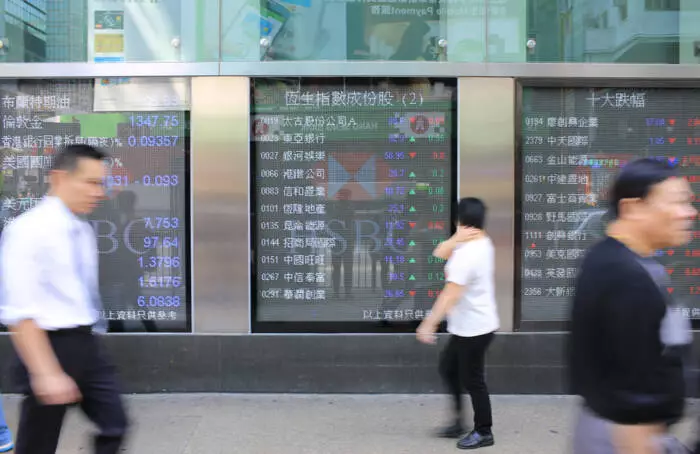In recent weeks, the Hang Seng Index has showcased impressive momentum, marking a notable five-week streak of gains. The index surged by a remarkable 7.04%, earning its strongest weekly performance since October. This rally can be attributed to various factors, including increasing speculation regarding potential interest rate cuts by the Federal Reserve and a surge of market enthusiasm driven by advancements in artificial intelligence. The Hang Seng Technology Index, in particular, mirrored this positive trend, climbing by 7.30% and highlighting the significant role that technology plays in this resurgence.
The performance of significant tech stocks has played a pivotal role in this rally. For instance, Alibaba Group Holdings Ltd. experienced a staggering 24.10% increase in value within just a week, solidifying its status as a market leader. Competing technology firms such as Tencent and Baidu also saw substantial gains of 10.55% and 11.94%, respectively. This collective surge reflected broader optimism surrounding mainland China’s equity markets, which have also shown resilience in response to developments regarding U.S. tariffs and China’s advancing position in the global AI landscape.
While the Hang Seng Index and its technology counterparts enjoyed robust gains, the performance of mainland Chinese markets was relatively more subdued. The CSI 300 and Shanghai Composite Index saw modest increases of 1.19% and 1.30%, respectively. This divergence underscores the fact that sentiment surrounding U.S. Federal Reserve policies may not be as influential in shaping the behavior of mainland markets. Instead, these markets seem to be swayed more directly by localized conditions and geopolitical considerations.
Yet, it is crucial to note how global sentiment regarding trade dynamics could reverberate through the Chinese economy. The potential for easing tensions in U.S.-China trade relations would naturally lend optimism to the markets, enhancing investor confidence and stability within the region.
Turning our attention towards commodities, the recent week has been characterized by varied performances across different sectors. Gold, often viewed as a safe haven during times of volatility, continued its upward trajectory, now extending its winning streak to seven weeks. It ended the week by climbing 0.79% to settle at $2,883. It even reached a record high of $2,943 before seeing some reprieve. This surge is indicative of rising investor demand for precious metals amidst uncertain macroeconomic conditions.
Conversely, the iron ore market encountered challenges, with spot prices dropping by 3.14% to $788.11—demonstrating persistent concerns over U.S.-China trade policies, despite a temporary lull in tariff impositions. This volatility serves as a reminder of the intricate balance between domestic sentiment and broader international relations that impact commodity prices.
Looking outward, global markets have exhibited mixed reactions, with the ASX 200 index in Australia rising by 0.52%, driven primarily by gains in banking, technology, and gold stocks. Specific companies like Northern Star Resources and Commonwealth Bank of Australia have benefitted significantly from favorable conditions in their respective sectors. Positive corporate earnings narratives have provided additional support for the market, indicating resilience amidst fluctuating global economic conditions.
Meanwhile, the Japanese Nikkei Index also concluded the week on a positive note, appreciating by 0.62%. This uptick coincided with a weakening yen against the U.S. dollar, which may bolster the financial performance of Japanese companies with overseas operations. Strong consumer price increases in Japan further reflect strengthening domestic demand.
As we look to the upcoming weeks, the landscape presents both challenges and opportunities for Asian markets. Investors should remain attuned to developments in U.S. tariff policies, geopolitical dynamics, and key economic indicators that could influence market behavior. The Reserve Bank of Australia’s interest rate decisions will similarly have significant implications for the ASX 200.
While the Hang Seng Index demonstrates strong gains driven by technology and positive sentiment, market participants must stay vigilant about external factors that can shift the market landscape. A careful watch on economic data releases, coupled with evolving geopolitical tensions, remains essential for navigating this complex market environment.

